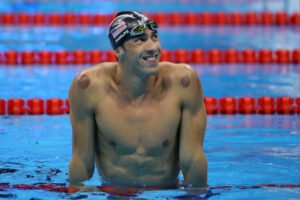Cupping Therapy Gaining Popularity in Bozeman, MT!
Over the past seven to eight years we have seen a large increase in conservative care solutions for sports injuries as well as for general sports recovery. Some of these techniques are not new but have been seen utilized by prominent sports figures and therefore, have become more popular. Sports cupping or cupping therapy is one of these techniques.

Most commonly thought of with this modality are swimmers. During the summer Olympics in 2016 many took notice of Michael Phelps and other USA swimmers with large round purple bruises on their back and shoulders (2). When reporting on the use of cupping with elite athletes, the National Broadcasting Company stated that cupping “is a therapy technique that athletes use to help their muscles recover and perform at their best” (2). These factors drove an increase in the notoriety of cupping for sports performance, recovery and injury healing.
In the case of the Olympics, cupping was used to aid in regulating neuromuscular inputs, increase local circulation and energy metabolism as well as increase local energy uptake, all which are vital for recovery from sport activity and injury (1).
Why Use Cupping Therapy?
Cupping is an ancient technique and popular therapy worldwide due to the vast amount of benefits that it provides as well as being an inexpensive and noninvasive modality. It is therefore becoming a more commonly used adjunct treatment for many musculoskeletal focused physicians.
Cupping is typically done using either a glass or plastic small round cup and placing it over the tight tissues (muscle, tendon, ligament, and/or fascia), then using a small tool to suction out the air. This negative pressure results in the skin being drawn upward from the tissue. This is considered dry cupping. Emollients such as coconut oil, coco butter and lotion can be used to allow movement of the cup over the tissues to increase the surface of the treated area. Active movements can also be performed through various ranges of motion to further increase circulation and further lift and loosen muscular adhesions.
This decompressive modality has been shown to restore function as well as manage myofascial pain which can be described as painful taut bands of muscle that contain discrete hypersensitive active areas (1). Cupping can accelerate recovery of muscle fatigue in athletes who are experiencing delayed muscle onset soreness and maintain exercise performance through prolonged training seasons and healthy soft tissue during off season (1). Studies have also shown that cupping can also improve parasympathetic activity in heart rate variability which can therefore accelerate the recovery response (1). Cupping has even been found to be as effective in reducing pain and edema (swelling) as taking a dose of acetaminophen (Tylenol) (2)!

How Long Will the Mark Last?
The large purple spots remaining after a cupping session is one of the most recognized results of the therapy. The marks are due to the negative pressure which causes superficial dermal capillary dilation leading to capillary rupture (2).
The most common question we get is how long will the marks last? Due to the bruising that naturally occurs from the decompressive force, time for the marks to fully disappear is around 7 days. Typically the cupping marks are more purple or dark red and last longest after the first session, with continually less bruising at following sessions. Responses are of course variable due to factors such as hydration levels, sleep quality and activity.
Pro Chiropractic is happy to offer cupping as one of their many therapies. If you would like to try cupping for wellness care or have an injury you would like evaluated for this modality, please give our office a call!
References:
- Chiu YC, Manousakas I, Kuo SM, Shiao JW, Chen CL. Influence of quantified dry cupping on soft tissue compliance in athletes with myofascial pain syndrome. PLoS One. 2020;15(11):e0242371. Published 2020 Nov 19. doi:10.1371/journal.pone.0242371
- Trofa DP, Obana KK, Herndon CL, et al. The Evidence for Common Nonsurgical Modalities in Sports Medicine, Part 2: Cupping and Blood Flow Restriction. J Am Acad Orthop Surg Glob Res Rev. 2020;4(1):e1900105. doi:10.5435/JAAOSGlobal-D-19-00105
